Nestled in the shadows of the Kathmandu Valley, Sankhu stands as a testament to centuries of history and culture. Founded by Jogdev Bajracharya from seven villages, its conch-like shape reflects a deep cultural significance, while its historical roots trace back to the revered Lavanya kingdom mentioned in the Skanda Purana. Once a bustling trade hub to Tibet during the Malla period, the town’s vibrant tapestry of legends and myths, woven around the Shali River, continues to intrigue. What secrets might the ancient streets and doors of Sankhu reveal about its storied past?
Key Points
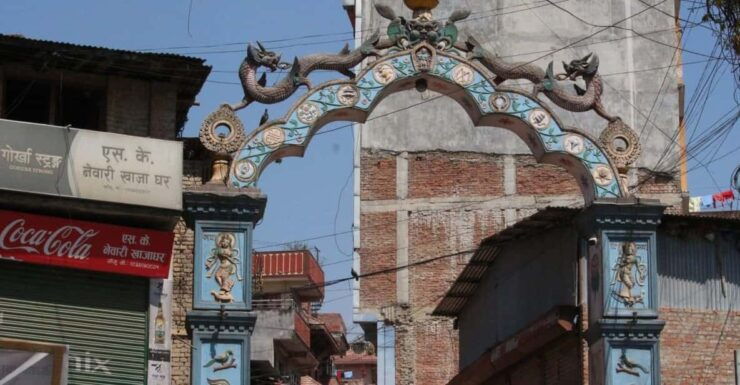
- Sankhu’s origins trace back over three millennia, emphasizing its significance in Nepal’s cultural and historical landscape.
- Founded by Jogdev Bajracharya, Sankhu is shaped like a conch and emerged from seven villages.
- It is mentioned in the Skanda Purana as the capital of the ancient Lavanya kingdom.
- The town played a vital role in trade with Tibet during the Malla period, enhancing its historical importance.
- Rich in mythology, legends like that of King Navaraj intertwine with the Shali River, deepening Sankhu’s cultural heritage.
Overview of Sankhu
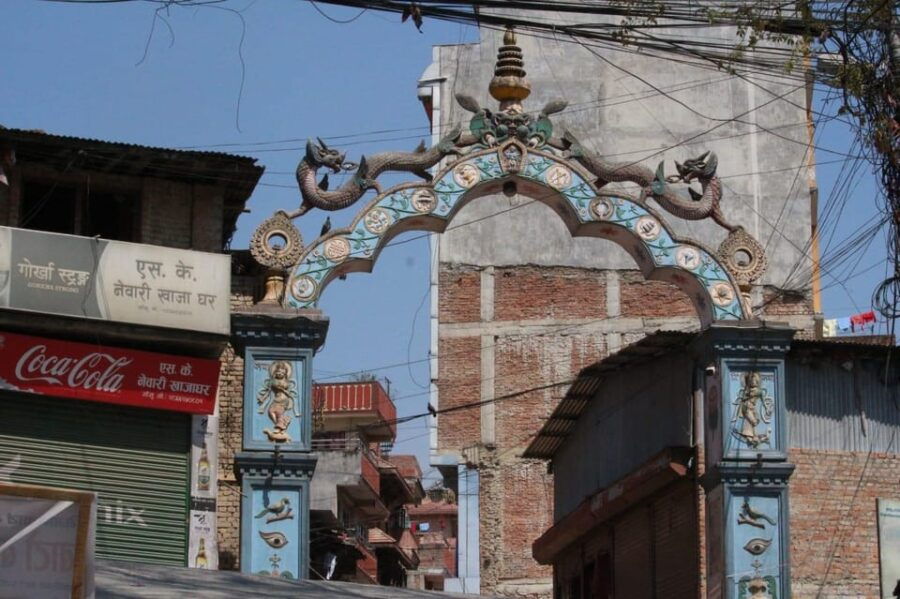
Sankhu, nestled northeast of Kathmandu, is a vibrant historical town that showcases a rich tapestry of culture and mythology. Its name, derived from the Newari words ‘san’ (vote) and ‘kwa’, reflects its deep-rooted connection to local governance and community.
Once a crucial gateway to Tibet during the Malla period, Sankhu flourished, drawing traders and travelers alike. The town’s architecture features intricate woodwork and traditional doors, each symbolizing significant life events, from marriages to farewells.
Its lively festivals, particularly the Bajrayogini Jatra, breathe life into its streets, celebrating its spiritual heritage. With a history steeped in legend and tradition, Sankhu embodies a unique blend of past and present, making it a captivating destination for those seeking to explore its enigmatic origins.
Find more activities and experiences we've covered in Kathmandu.
Historical Context
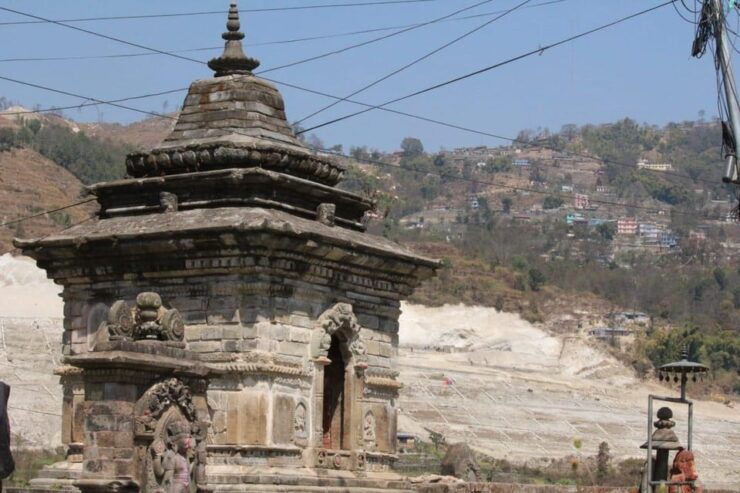
Rich in history, the origins of this ancient town stretch back over three millennia, revealing its significance in the broader tapestry of Nepal’s cultural and political landscape. Local historian Prakashman Shrestha notes that Sankhu was established from seven villages, founded by Jogdev Bajracharya, and shaped like a conch. Its mention in the Skanda Purana as the capital of the Lavanya kingdom highlights its former prosperity.
Home to legendary figures like King Navaraj, Sankhu served as a vital gateway to Tibet during the Malla period. It has deep connections to the Shali River and is richly woven into the fabric of Nepali mythology.
These elements collectively illustrate Sankhu’s enduring legacy, capturing the imagination of those who explore its storied past.
Cultural Heritage
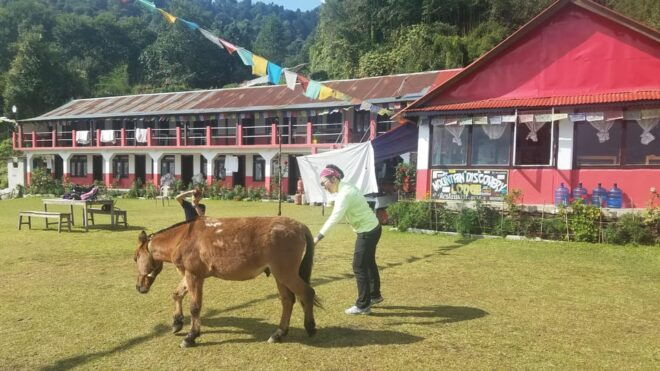
Cultural vibrancy permeates the streets of this ancient town, where intricately adorned doors stand as testaments to the traditions and customs that define its heritage. Each doorway tells a story, representing the lifeblood of Sankhu’s community.
The Baudhvakha symbolizes marriage, a rite of passage for many families, while the Mahyamcha Dhwakha serves as a poignant farewell to daughters embarking on their new journeys.
The Si Dhwakha, meant for funeral processions, honors those who’ve passed, reflecting deep respect for ancestors.
Dhyah Dhwakhah welcomes divine worshippers during the Bajrayogini Jatra, and Madhavnarayan Dhwakha plays a vital role in annual ceremonies.
These doors embody the spirit of Sankhu, safeguarded by the Ashtamatrikas, intertwining daily life with sacred traditions.
Significant Doors of Sankhu
The significant doors of Sankhu serve as vibrant symbols of the community’s traditions, each one telling a unique story that reflects the rich tapestry of local life and beliefs.
These doors aren’t just architectural features; they embody the spirit of the people and their customs. Each entryway marks a pivotal moment in the lives of residents:
Baudhvakha: Celebrates the union of marriage.
Mahyamcha Dhwakha: Represents the bittersweet farewell of daughters.
Si Dhwakha: Guides mourners during funeral processions.
Dhyah Dhwakhah: Opens for divine worship during festivals.
These portals connect the past and present, inviting visitors to experience the depth of Sankhu’s cultural heritage while preserving the community’s identity for generations to come.
More Great Thing To Do NearbyNotable Legends and Myths
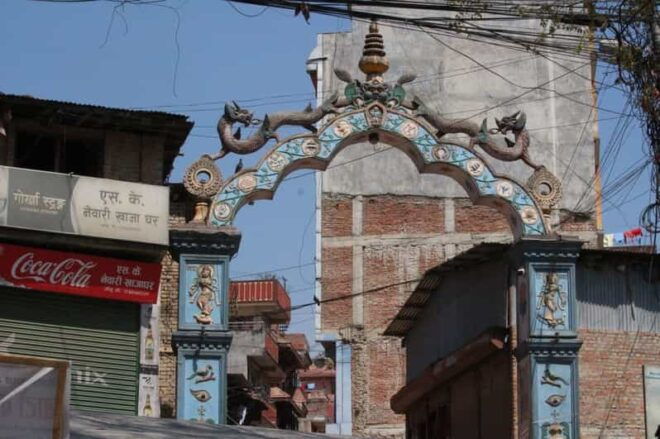
Legends and myths weave a captivating narrative around Sankhu, revealing tales of divine beings and ancient kings that have shaped its identity through the ages.
Among these stories, the legend of King Navaraj stands out, depicting his mystical connection with the Shali River, believed to have granted him prosperity and strength.
Another prominent myth involves the Ashtamatrikas, eight powerful goddesses said to protect the town and its people. Locals recount how these deities guided their ancestors, ensuring the village’s survival through trials and tribulations.
Plus, tales of celestial beings visiting Sankhu during festivals further enrich the cultural tapestry, making the village a vibrant center of spirituality and history, captivating the hearts of those who hear them.
Exploring Sankhu Today
Nestled in the serene embrace of the Kathmandu Valley, Sankhu today showcases a vibrant blend of ancient traditions and modern life, inviting visitors to explore its historical streets and rich cultural heritage.
The town’s essence radiates through its living heritage, where every corner tells a story. The intricate doors symbolize profound cultural practices. Festivities light up the atmosphere, especially during Bajrayogini Jatra. Local artisans continue age-old crafts, preserving the town’s artisan spirit. The warmth of the community enhances every visitor’s experience.
As one meanders through Sankhu, the echoes of its storied past harmonize beautifully with the lively present, creating a captivating tapestry that enchants all who visit.
Tour Experience and Details
Visitors to Sankhu can expect an immersive tour experience that seamlessly blends its rich history with contemporary cultural vibrancy, making each moment spent in this enchanting town truly memorable.
The tour lasts around five hours, allowing ample time to explore significant cultural sites while enjoying breathtaking views of the Kathmandu Valley. A professional guide fluent in English, French, or Hindi leads the way, sharing fascinating stories and insights.
Pickup from designated locations, like Thamel Marg, is included, with a brief waiting period before departure.
Tour highlights encompass traditional doors, spiritual symbols, and local customs. With added conveniences like entrance fees, lunch, and flexible cancellation policies, visitors can fully engage with the captivating essence of Sankhu without any hassle.
Questions You May Have
What Is the Best Time to Visit Sankhu for Sightseeing?
The best time to visit Sankhu for sightseeing is during spring and autumn. Visitors enjoy pleasant weather, vibrant festivals, and stunning landscapes, making it an ideal season to explore the area’s rich cultural heritage and history.
Are There Any Local Festivals Celebrated in Sankhu?
Sankhu’s vibrant local festivals, like Bajrayogini Jatra, celebrate its rich cultural heritage. Residents joyfully participate in traditional rituals, showcasing colorful processions, music, and dance, creating an unforgettable experience that draws visitors into its enchanting atmosphere.
What Are the Nearby Attractions to Explore After Visiting Sankhu?
After visiting Sankhu, travelers can explore the vibrant Bhaktapur Durbar Square, the serene Nagarkot viewpoint, and the ancient Changu Narayan Temple, each offering unique cultural experiences, breathtaking views, and rich historical significance in the Kathmandu Valley.
Is It Safe to Walk Around Sankhu at Night?
He found walking around Sankhu at night generally safe, as locals frequented the streets. However, he advised staying aware of surroundings and sticking to well-lit areas for a more comfortable experience.
What Traditional Cuisine Should I Try While in Sankhu?
Visitors to Sankhu shouldn’t miss savoring traditional Newari dishes like yomari, a sweet dumpling, and bara, a spiced lentil patty. These flavors reflect the region’s rich cultural heritage, enticing every palate with delightful culinary experiences.
Break Down
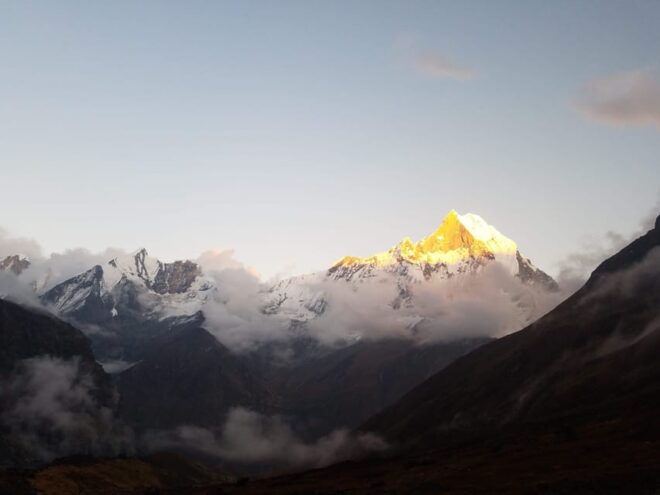
Sankhu, with its conch-shaped allure and rich history, invites exploration and wonder.
This vibrant town, steeped in legends and cultural heritage, serves as a gateway to Nepal’s past, revealing stories of trade and spirituality.
As visitors wander through its significant doors, they’re not just stepping into a town but into a living tapestry of ancient traditions.
With each corner turned, Sankhu continues to enchant, making it a must-visit destination for those seeking to uncover its mysteries.
You can check if your dates are available here:More Tour Reviews in Kathmandu
Looking for something different? Other Kathmandu activities we've written about
- 14 Best Shopping Tours In Kathmandu
- 25 Best Workshops And Classes In Kathmandu
- 18 Best Spa And Hot Springs Experiences In Kathmandu
- 20 Best Historical Tours In Kathmandu
- 15 Best Massage And Relaxation Services In Kathmandu
- 20 Best Helicopter Flights And Tours In Kathmandu
- 20 Best 3 Day Tours In Kathmandu
- 20 Best 4 Day Tours In Kathmandu
- 20 Best Private Driver Services In Kathmandu
- 20 Best Full-Day Tours In Kathmandu
- 25 Best Safari Tours In Kathmandu
- 4 Best Photography Experiences In Kathmandu
